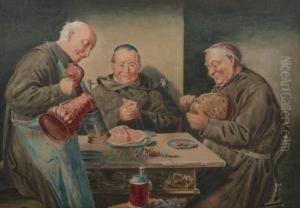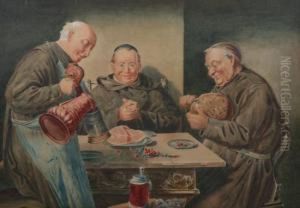Jp Sperl Paintings
Johann Sperl, often referred to as Jp Sperl or Johann Peter Sperl, was a German genre and landscape painter closely associated with the Leibl Circle—a group of artists centered around the figure of Wilhelm Leibl, one of the foremost realist painters of the time.
Sperl was born on April 24, 1840, in Buch near Neustadt an der Waldnaab, Bavaria. His initial training was not in the arts but in medicine; however, his passion for painting led him to abandon his medical studies. Sperl moved to Munich, which at the time was a vibrant center for art in Germany, to pursue his artistic career. He studied at the Munich Academy of Fine Arts and later worked under the guidance of Wilhelm Leibl, who had a significant influence on his style and approach to painting.
The artist worked on both genre scenes and landscapes, with his genre paintings often focusing on the rural life of his homeland. His works are characterized by a meticulous attention to detail, a commitment to realism, and a subdued color palette. Sperl was particularly skilled at capturing the nuances of light and shadow, which added a sense of depth and realism to his paintings.
Sperl's most famous painting is arguably 'Die Kartoffelernte' ('The Potato Harvest'), which demonstrates his ability to depict peasant life with dignity and a sense of quiet grandeur. His landscapes, on the other hand, often depicted the Bavarian countryside, rendered with a softness and sensitivity that reflected his personal connection to the region.
Johann Sperl remained an active artist throughout his life, though he never sought the limelight and was content to live a quiet life devoted to his art. He passed away on December 29, 1922, in Kutterling, now part of Bad Aibling, leaving behind a body of work that continues to be appreciated for its contribution to German realism and the depiction of rural life in the 19th century.

